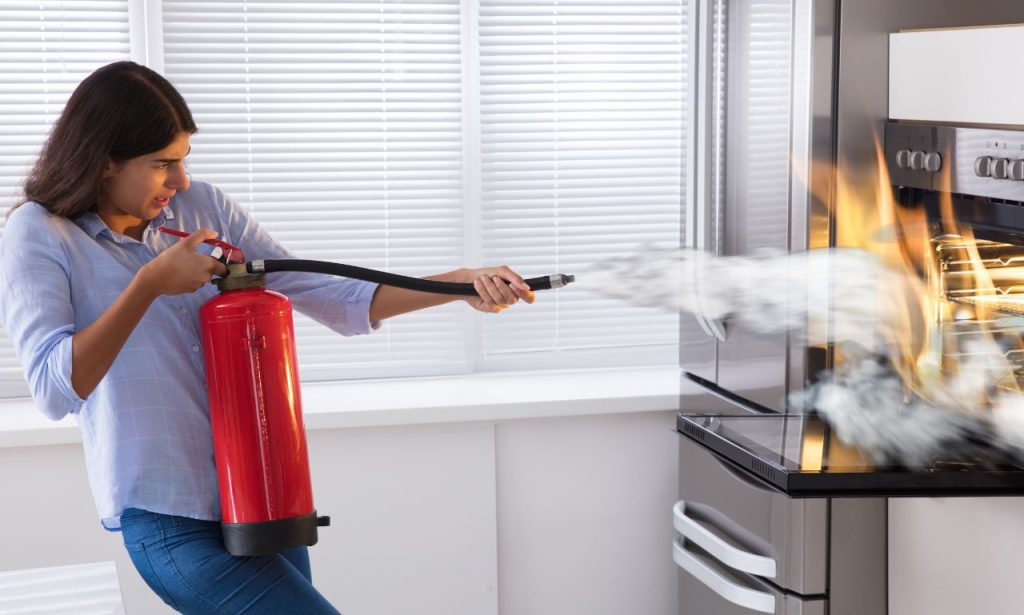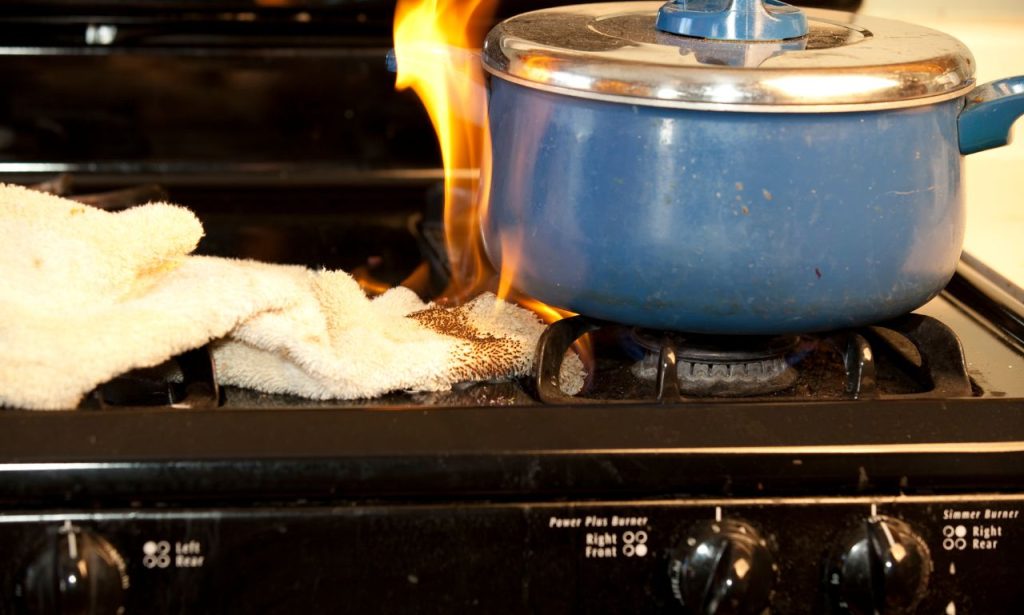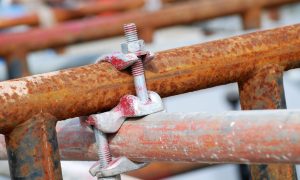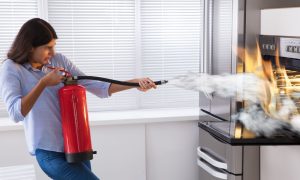The kitchen is where most home cooks and professional chefs work their magic. However, it’s also a place where accidents can happen—especially if you’re not paying attention to safety. One of the most common, yet overlooked, risks in the kitchen involves loose clothing, particularly loose sleeves. You might wonder, “Why should you avoid loose sleeves in the kitchen?” The answer lies in preventing kitchen hazards, which could range from burns to more serious injuries.
The Importance of Kitchen Safety
A safe kitchen environment isn’t just about knowing how to cook—it’s about being aware of the potential risks that come with it. A simple slip-up or failure to follow basic safety protocols can result in serious injuries or even kitchen fires. When it comes to your attire, something as basic as wearing loose sleeves can increase the risk of a dangerous accident. Loose sleeves are often overlooked when talking about kitchen safety, but they should never be underestimated. The dangers are more than just theoretical—they can become real threats.
Preventing Kitchen Accidents Starts with Awareness

- Kitchen accidents are common and can happen to anyone, no matter how experienced you are.
- Wearing proper attire, including sleeves that are snug and safe, is essential for preventing common hazards.
- Awareness of your surroundings, including the safe handling of cooking equipment, is key to avoiding accidents.
Potential Hazards of Loose Sleeves
Now that we know safety is a priority, let’s focus on why loose sleeves in the kitchen can be a dangerous hazard. It might seem like a small detail, but loose sleeves can cause several issues that make cooking much more dangerous.
Fire Risks
Loose sleeves in the kitchen are an open invitation for fire hazards. Whether you’re working with an open flame from a gas burner, a hot oven, or even a deep fryer, there’s always the risk of your clothing catching fire. Clothing is often made from flammable materials, and loose sleeves can easily touch a flame or hot surface.
- Cooking around an open flame or gas burner poses a constant risk of ignition for any loose clothing.
- In a busy kitchen, where people are constantly moving, loose sleeves can easily brush against hot surfaces or even hot food.
- If a sleeve catches fire, it can spread quickly, leading to serious burns or more extensive kitchen fires.
Snagging on Equipment
When you have loose sleeves dangling from your arms, they have the potential to snag on kitchen equipment or utensils. From the edge of countertops to handles on hot pots and pans, loose clothing can easily get caught in machinery or cooking surfaces.
- Loose sleeves can get stuck in mixer whisks, food processors, or other appliances, causing distractions and accidents.
- A sleeve caught on something might pull your arm toward a hot stove or open flame, resulting in burns or injury.
- If your sleeves get snagged while reaching across cooking equipment, it could lead to spills of hot food or liquids.
Risk of Contamination
The kitchen is a place where cleanliness is paramount. Loose clothing, particularly sleeves, can drag across countertops, cutting boards, or pots, transferring germs, bacteria, and dirt to your food. Loose sleeves are a direct pathway for contaminants to travel, leading to potential foodborne illnesses.
- Food safety starts with clean hands and clean clothing. Any contamination can lead to severe health risks, especially when handling raw food like meat or poultry.
- Loose sleeves can drag across raw ingredients, spreading bacteria to your dishes.
- Keeping your sleeves neatly tucked away ensures that food prep remains hygienic and that you’re reducing the risk of cross-contamination.
Kitchen Safety Rules and Guidelines
To prevent accidents in the kitchen, it’s essential to follow certain safety protocols. Whether you’re a seasoned chef or a home cook, safety should be a top priority. Here are some basic kitchen safety rules and guidelines.
Appropriate Footwear
The right footwear is crucial in a kitchen. Slips and falls are common, especially when working with hot liquids or greasy surfaces. Choose slip-resistant shoes that provide support and protection.
- Non-slip shoes prevent falls on wet or greasy floors.
- Proper footwear ensures you can maintain balance when handling hot items.
- Avoid sandals or open-toed shoes that leave your feet exposed to burns or cuts.
Securely Tying Back Hair
Long hair in the kitchen should always be tied back. It prevents hair from falling into food or getting caught in equipment. Hair, like loose sleeves, can be a serious contamination risk.
- Tie hair back tightly to prevent it from touching hot surfaces or food.
- Use hairnets or head coverings in commercial kitchens for extra protection.
- Long hair can obstruct your vision or get in the way when you’re busy cooking, so always secure it before starting.
Using Proper Kitchen Tools
Make sure you’re using the appropriate tools for the job. Using the right equipment reduces the risk of injury and makes cooking easier.
- Ensure that knives are sharp and used properly, reducing the chance of slips.
- Use pot holders and oven mitts to handle hot pots and pans, rather than relying on clothing.
- Avoid using your bare hands to handle hot cooking equipment, such as a baking dish or grill.
Practical Tips for Choosing Safe Kitchen Attire

Your choice of kitchen attire is crucial in preventing accidents. It’s not just about keeping clean—it’s about safety, too. Here’s how to make sure you’re dressing right for the kitchen.
Selecting Fitted Clothing
When it comes to safety in the kitchen, fitted clothing is a must. Loose sleeves or baggy clothing can catch on equipment, become a fire hazard, or drag through your food. Opt for fitted or tailored clothing instead.
- Fitted sleeves prevent any fabric from coming in contact with hot surfaces or cooking equipment.
- Avoid clothing with long, flowing sleeves that might catch on things or drag through food.
- When possible, choose clothing made from natural fabrics, which are less likely to catch fire than synthetics.
Choosing Flame-Resistant Materials
If you’re working with high heat or open flames, flame-resistant clothing is an important option. Materials such as cotton or specially treated fibers can protect you from burns.
- Flame-resistant fabrics protect against hot surfaces or flames.
- Look for clothing made with fire-resistant materials if you frequently use ovens or open flames.
- Fabrics designed for kitchen safety offer an extra layer of protection, reducing the risk of burns from hot pans or spills.
Avoiding Accessories that Dangle
Jewelry and other accessories can become a safety hazard in the kitchen. Chains, bracelets, and dangling earrings can catch on equipment or drag through food, spreading contaminants.
- Remove any jewelry before cooking to prevent it from getting caught.
- Consider simple, non-dangling accessories that won’t interfere with your work.
- If you wear an apron, make sure it fits snugly and doesn’t have long straps that could get caught.
The Role of Attire in Burn Injury Management

In a hot kitchen, burns are a real threat. Proper attire not only helps prevent burns but also plays a role in how to handle burns if they do occur. Whether you’re dealing with steam burns or fire burns, quick action can minimize damage.
Immediate Response to Burns
If you suffer a burn in the kitchen, immediate action can prevent serious injury.
- Cool the burn with running cold water to reduce heat and minimize skin damage.
- Avoid using ice directly on the burn, as it can cause further damage.
- Apply a sterile dressing or burn ointment after cooling the burn.
Preventative Strategies
Preventing burns starts with proper attire and precautions.
- Always wear snug-fitting clothing to reduce the risk of fabric catching fire.
- Be mindful of hot surfaces, especially around the oven or stovetop.
- Use pot holders, oven mitts, and other protective gear to handle hot objects.
Conclusion
Loose sleeves might seem harmless, but in the kitchen, they can lead to dangerous accidents. Whether it’s fire risks, contamination, or snagging on equipment, these hazards are best avoided by wearing properly fitted clothing. By following simple safety protocols, choosing the right attire, and staying mindful of your environment, you can keep yourself and your kitchen safe.
ALSO READ: What Is the Maximum Temperature for a Hot Water Heater?
FAQs
Yes, loose sleeves or clothing can catch fire from open flames, hot surfaces, or boiling liquids, leading to burns or kitchen fires.
Wear flame-resistant clothing, avoid loose sleeves, and always use oven mitts and pot holders when handling hot items.
Always keep the kitchen tidy, wear appropriate clothing, use tools safely, and stay focused to avoid common kitchen hazards.
Long hair can get in the way, become a contamination risk, or even catch fire if not tied back and secured properly.




